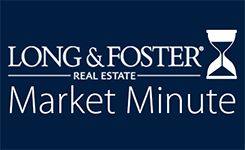 Though inventory remained low, median sales prices increased in many areas of the greater Baltimore region in August. Overall, the region’s market is very solid, according to the Long & Foster Market Minute reports. The Baltimore region includes Baltimore, Anne Arundel, Carroll, Howard and Harford counties and the city of Baltimore.
Though inventory remained low, median sales prices increased in many areas of the greater Baltimore region in August. Overall, the region’s market is very solid, according to the Long & Foster Market Minute reports. The Baltimore region includes Baltimore, Anne Arundel, Carroll, Howard and Harford counties and the city of Baltimore.

Two areas in the region, Baltimore City and Baltimore County, saw rising numbers of homes sold in August, with increases of 4 percent over the previous year. Median sale prices increased by 8 percent in both Carroll and Harford counties, followed by Anne Arundel and Baltimore counties, which each saw a 5 percent increase.
“The Baltimore region is following suit closely with what we’re seeing happening overall throughout the market areas where Long & Foster operates,” said Gary Scott, president of Long & Foster Real Estate. “Baltimore’s market is solid and has remained steady over recent months without any fundamental changes.”
Active inventory decreased by double digits across the Baltimore region last month, including a 26 percent decrease in Carroll County and a 22 percent decrease in Harford County. Homes in the region sold in four to eight weeks on average.
“Inventory continues to be a challenge in every market in which we operate, and we believe inventory is an issue that will probably not go away overnight,” Scott said. “There are a lot of people who have financed, refinanced or purchased at very favorable interest rates in recent years, and their motivation is different than it was for many in the past – they’re staying put.”
The inventory shortage is making purchasing a home particularly difficult for millennial buyers, Scott said. That’s not necessarily because millennials and older generations are competing to purchase the same homes, but more due to homeowners and investors choosing not to sell homes that millennials would be interested in purchasing, he said. Although new construction has increased, homebuilders are having a hard time meeting the demands of the market, he said.
“More people are moving toward smaller more effective, more efficient housing than the big boxes,” Scott said. “There are many millennials looking for maintenance-free, convenient living – like condos and townhomes – that is close to retail, entertainment and work opportunities.”
The best thing that homebuyers can do, Scott said, is to have their financing lined up, have an agent who is an expert negotiator at the ready and remember that real estate is hyperlocal. Within a single large subdivision, it’s possible to see homes in one part of the neighborhood sell quickly while homes in another part sell at a slower pace, he said. Long & Foster’s Market Minute reports allow consumers to view market data for individual communities and neighborhoods. Combining the information from regional and local reports, along with the neighborhood insight and expertise of a Long & Foster agent, can provide a much more rounded and accurate picture of the market, Scott said.
The Long & Foster Market Minute is an overview of market statistics based on residential real estate transactions for more than 500 local areas and neighborhoods and over 100 counties in eight states. The easy-to-read, easy-to-share reports include information about each area’s units sold, active inventory, median sale prices, list to sold price ratio, days on market and more.
Information included in this report is based on data supplied by Metropolitan Regional Information System and its member associations of Realtors, which are not responsible for its accuracy. The reports include residential real estate transactions within specific geographic regions, not just Long & Foster sales, and they do not reflect all activity in the marketplace. Information contained in this report is deemed reliable but not guaranteed, should be independently verified, and does not constitute an opinion of MRIS or Long & Foster Real Estate.